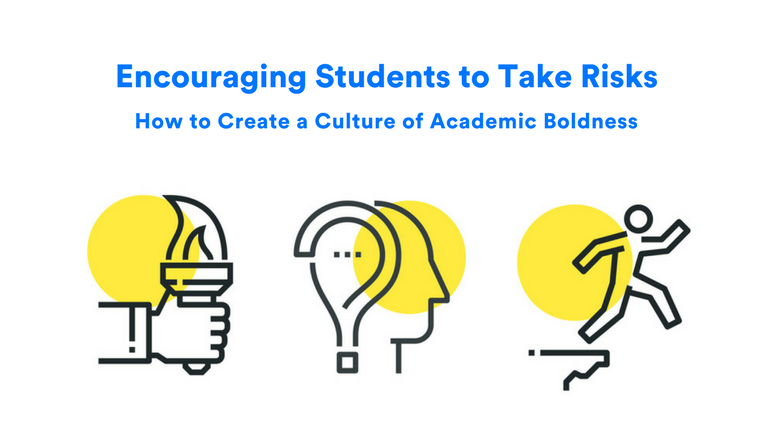
In a classroom environment where students’ grades often depend on obedience and towing the line… it’s easy for students to develop a strong aversion to risk.
But that could be detrimental to their future careers. As the saying goes, nothing ventured, nothing gained.
Studies show that individuals who are willing to take risks are much more likely to get promoted, become leaders in their field, and even find personal fulfillment at work.
As teachers, it can be surprisingly hard to get students to buck a tradition of obedience and formulaic thinking in order to take risks in the classroom.
Get started with some of the following tips in order to create a class culture that is risk-friendly.
Build a Safe Environment
A mandatory prerequisite for intellectual risks? A safe and judgement-free space.
Students will never step outside their comfort zone if they’re afraid a peer or teacher will ridicule them for their potential failures.
From day one it is important to establish a learning space where mistakes are not only allowed, but are embraced.
Don’t turn a deaf ear to laughing or disrespectful comments. Stop the class in their tracks, reprimand the behavior, and have a conversation as a class about why it’s never ok to laugh at each other.
If you’re consistent with this, you’ll be able to nip the behavior in the bud before it flourishes.
Model Risk Taking
Choose a skill that you’re already pretty good at – let’s say dribbling a basketball. Dribble a ball in front of your class and explain that you could do so slowly and perfectly forever, but you would never get any better.
Instead, you know you need to push your practice in order to improve. Dribble faster and faster until the ball escapes you. Instead of getting frustrated, though, show your students how you’re pleased.
Even though this time the ball got away, you know you’ll be a little bit better next time for the risk that you took.
Develop Strong Relationships
It’s much easier to take a risk if you know someone you trust is there to pick you back up when you fall.
For this reason, it’s imperative that you build a trusting environment in your classroom if you want to cultivate risk-takers. Follow through on your words. Treat your students with care and respect.
If they know they can trust you, they’ll be more willing to venture into uncharted academic territories.
Celebrate Kids Who Support Each Other
While treating others with respect is non-negotiable, also be on the lookout for kids who go above and beyond to encourage their peers.
Find a way in your classroom to celebrate those students who are always building others up.
Maybe you award a weekly teamwork award or even give extra credit points on an assignment for a handful of students who exemplify these values.
Learn About Risk-Takers
Most of the remarkable figures we learn about from science, business, or human rights are people who were willing to take risks. Rosa Parks, Galileo, and Steve Jobs all took risks and made the world a better place for it.
When teaching and learning about historical figures, engage students in conversation about how these leaders must have felt and what made them take risks anyways.
Very few people ever changed the world by playing it safe.
Fail Fearlessly
Just as it’s useful to model for students how taking risks can help you improve at something you’re already good at, it’s also useful to show that you aren’t afraid to tackle a skill that you’re downright bad at.
Let’s say you aren’t much of an artist. When you share your example for a project that requires drawing, do so boldly. Call attention to your pitiful stick figures with pride.
By helping students see that not everyone is going to be great at everything, you make it much less scary to try something new.
Incentivize Risk-Taking
Some students avoid risks because they are afraid it will affect their grades. They’re happy to play it safe and secure their B+, adamantly avoiding any risks that could end unfavorably.
Circumvent this way of thinking by adding a part of a grade for creativity or originality.
In a rubric for an essay, assign points for using new vocabulary words, or for trying out specific literary devices. Kids will have to go beyond what comes naturally to them if they want to maintain their grades.
What other ways do you promote risk-taking in your classroom? Share your ideas in the comments below.



Leave a Reply